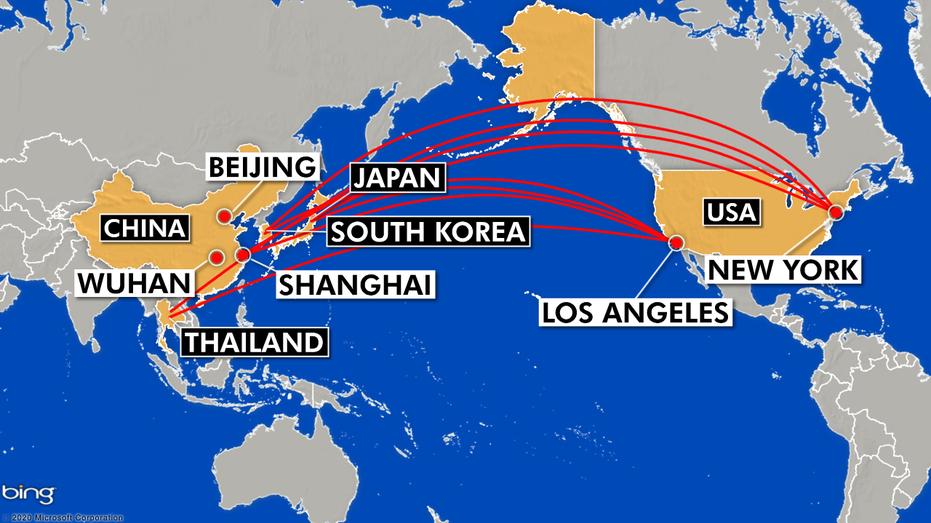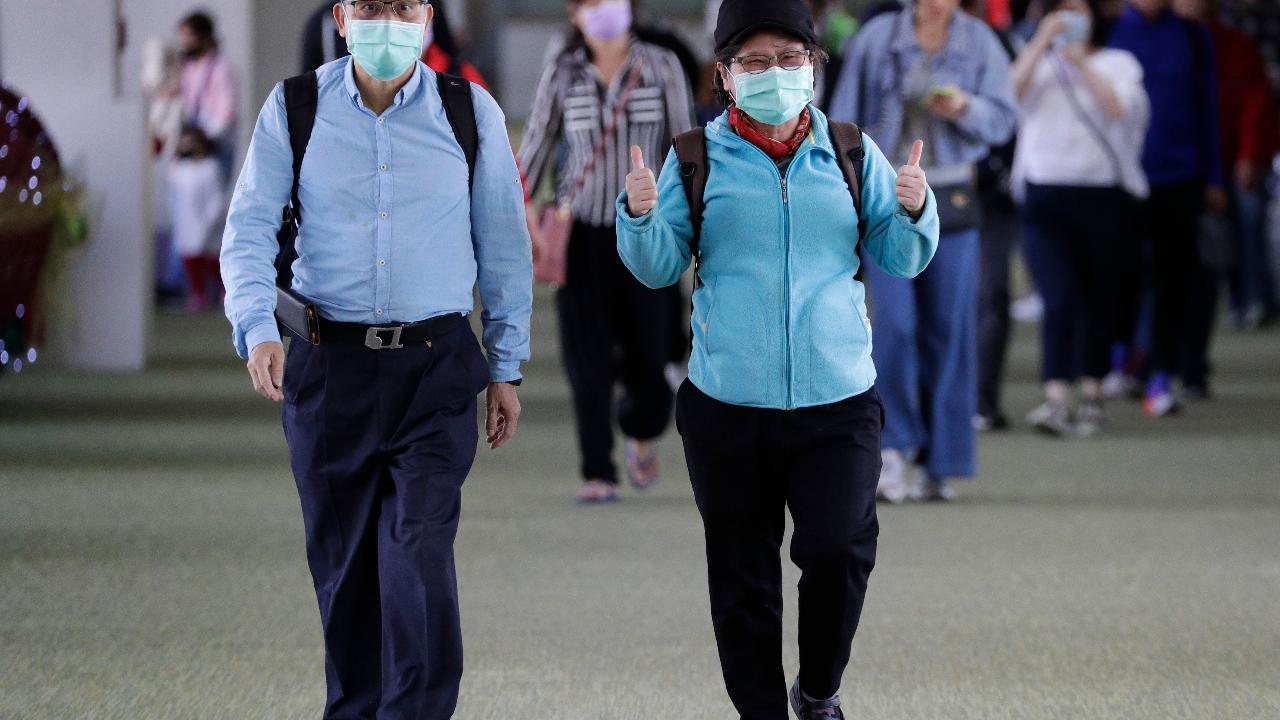Too soon to tell if coronavirus is as dangerous as SARS cousin
New illness comes from large family of coronaviruses
The new virus from China has the world on edge because it’s a close cousin to viruses that killed hundreds in separate outbreaks. While it’s too early to tell if this latest threat will prove as deadly, health authorities are drawing on lessons from that grim past.
WHAT’S THE LINK
The new virus comes from a large family of coronaviruses, some causing nothing worse than a cold. But in late 2002, a coronavirus named SARS erupted in southern China, causing a severe pneumonia that rapidly spread to other countries. It infected more than 8,000 people and killed 774 -- and then it disappeared, thanks to public health measures.
GET FOX BUSINESS ON THE GO BY CLICKING HERE
In 2012, another coronavirus dubbed MERS began sickening people in Saudi Arabia. It’s still hanging around, causing small numbers of infections each year: The World Health Organization has counted nearly 2,500 cases of MERS in the Middle East and beyond, and more than 850 deaths.
So far, deaths from the new virus have been a small fraction of the more than 850 confirmed infections, most of those cases in China.
WHERE DO THESE VIRUSES COME FROM?
SARS and MERS came from animals, and this newest virus almost certainly did, too. The first people infected visited or worked at a seafood market in the Chinese city of Wuhan.
STOCKS TUMBLE AS ANOTHER CASE OF DEADLY CORONAVIRUS CONFIRMED IN US
SARS initially was traced to civet cats sold in a live animal market, but later scientists decided it probably originated in bats that infected the civets. People can catch MERS from infected camels, although again, bats likely first spread that coronavirus to camels.
That animal-to-human jump is a huge concern for all kinds of viruses. Every so often, new strains of bird flu make the jump from Asian live poultry markets to people, for example.
“These wildlife markets are a risk,” said Dr. Ian Lipkin of Columbia University, who assisted the WHO and China during the SARS outbreak and advises Saudi Arabia about MERS.
HOW SIMILAR ARE THEY?
Experts can't yet tell whether the new virus called 2019-nCoV -- it stands for “novel coronavirus” — is more like SARS or MERS.
Genetically, they’re all closely related but “they really are different viruses,” said Dr. Anthony Fauci, infectious diseases chief at the U.S. National Institutes of Health.
One indication of a virus’ danger is how easily it spreads from person to person.

'FROZEN' WITH FEAR: OUTBREAK SHUTS DOWN DISNEY, MCDONALD'S STORES
Unlike SARS, “it looks like it doesn’t transmit through the air very easily and probably transmits through close contact,” said Dr. David Heymann, who headed WHO’s global response to SARS.
And while it's too soon to be sure, Heymann said the new virus appears most dangerous to older adults who have other health problems. .
Complicating matters, if this new virus is fairly mild, it may be harder to stem the spread. That’s because people who aren’t sick enough to see a doctor and thus don't learn they should be isolated could keep spreading it, noted Neil Ferguson of Imperial College London, who has consulted for WHO. Nor is there any way to know yet how often people become infected but show no obvious symptoms.
CLICK HERE TO READ MORE ON FOX BUSINESS
"We may see more mild cases as the surveillance intensifies," WHO spokesman Tarik Jasarevic said Friday in Geneva. “So the issue is not so much really numbers that we know will go up.”
IT’S FLU SEASON IN THE NORTHERN HEMISPHERE -- HOW WILL PEOPLE KNOW THE DIFFERENCE?
Since symptoms are similar — fever, cough and in more severe cases shortness of breath or pneumonia — it’ll take a medical test to tell. There is one, but health authorities in China, the U.S. and elsewhere are working to make it more widely available.
CRUDE PLUNGES AS CORONAVIRUS OUTBREAK THREATENS TRAVEL DEMAND
Given that it is flu season in China, too, it's “all the more impressive that they were able to recognize this outbreak quickly,” Dr. Brian Garibaldi of Johns Hopkins University said.
Precautions that hospitals often use for flu season and for other infectious diseases should help for this, too, Garibaldi added. For example, in many U.S. hospitals people are given masks if they arrive with a fever and cough during flu season. And a legacy of the 2014 West Africa Ebola outbreak -- which also resulted in infected travelers -- is that doctors and hospitals are supposed to ask about recent foreign trips.
HUNTING VACCINES
While there is no vaccine — or specific treatment — for SARS or MERS, Fauci said it is technically possible to create a vaccine against this new virus. NIH did develop a potential vaccine candidate for SARS. It proved safe in a small first-step study in people but never was tested further because by then, the outbreak was ending.
This time around, scientists have more of a head start. Just weeks after the first unusual pneumonias were reported, Chinese scientists mapped the genes of the viral suspect and shared them with world health authorities.
Now, NIH is among several groups working to create a vaccine for the new virus, using newer and faster technology than was available during SARS. Fauci hopes to begin first-step safety tests in about three months, but something ready for real-world use would take far longer.






















